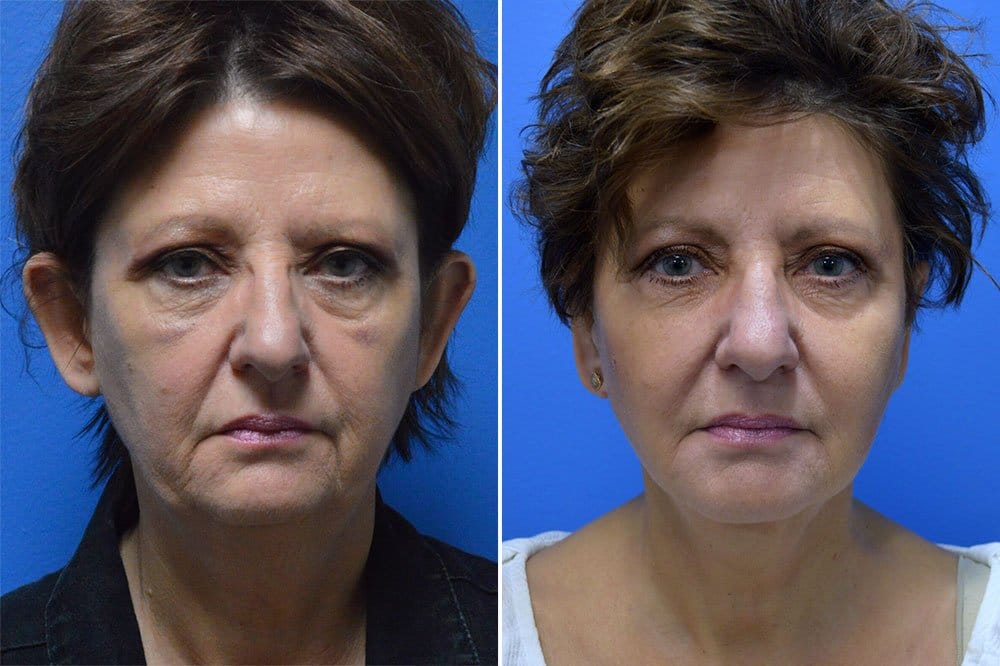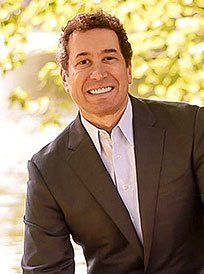Ear Surgery (Otoplasty)
Otoplasty, more commonly known as ear pinning surgery, is a surgical procedure designed to correct or “pin back” protruding ears. Ears that project further than normal appear unnatural to many people, and can therefore be a cause of poor self-image.

Who can benefit from otoplasty?
Ear surgery can benefit people of all ages, but it can be especially beneficial for children with protruding ears who experience teasing from their peers. After about 5 years of age, the ears are sufficiently developed to perform otoplasty. When the procedure is done early, it can help alleviate the distress of teasing and promote a healthier self-image.
“From the moment I stepped into the clinic, I felt comfortable. Everyone treated me with kindness and respect, and I never felt ashamed. The whole procedure from scheduling to post-op care was well-organized and I felt like all my answers were answered in a timely manner.”
What is involved in ear reshaping surgery with Dr. Branman
During otoplasty, Dr. Branman makes very precise incisions behind the ear to expose the cartilage. To reposition the ear, it may be necessary to remove or remodel some of the cartilage. After such alterations are complete, sutures and bandages are put in place to maintain the new form. Sutures are generally removed within a few days in a follow up appointment with Dr. Branman.
Otoplasty can be performed in our Little Rock office or an outpatient surgical center. This procedure is performed under general anesthesia.
In this video, our very own Registered Nurse April Gring walks you through the ear reshaping process – from prepping for your surgery through your full recovery. For more information about surgical procedures at our surgery center, please watch our general surgery video here.
Video transcript »
Hi y’all, April Green here, registered nurse at the Cosmetic Surgery Center. Today, we are going to be talking about an otoplasty. If you haven’t already watched the general surgery information video, go ahead and do so before getting into this.
The items you’ll need at home include your prescription medications, lab results, some hydrogen peroxide, Q-tips to clean your incision sites, Polysporin for aftercare, and a moderate compression headband. I just want to remind you to wear a button-up or zip-up top to surgery so we don’t have to pull anything over your head after surgery. Also, it’s very important to shampoo your hair the night before and the morning of surgery so it’s nice and clean, since we’ll be working in that area. Avoid any hair gel or hairspray on the day of surgery, and make sure your face is clean with the face soap we mentioned in the general surgery video, with no makeup, moisturizer, or anything else applied.
Now let’s talk about post-operative care. If you notice any sudden, profuse bleeding from your incision area that’s soaking through your dressing, give us a call right away. Try to remain calm, as getting upset can raise your blood pressure and increase the bleeding. Restart your antibiotic and Arnica medications after you get home with a light meal. Avoid forceful coughing or sneezing for the first 7 to 10 days. Any bruising in the surgical area should resolve within one to two weeks.
If you notice a low-grade fever or feel warm, take your temperature. If it goes above 101.5°F, take some Tylenol—just make sure your pain medication doesn’t already contain Tylenol to avoid doubling up—and increase your fluid intake. If it doesn’t drop below 101.5°F, give us a call.
Your head will be wrapped with a compression bandage after surgery; do not remove or loosen it. Refrain from coloring or chemically treating your hair for four weeks post-surgery. If you plan to get it done, do so about two weeks before surgery.
Avoid excessive facial movements, like straining or bending forward, for about two weeks after surgery. If you feel tightness in your incision area, you might be moving your head too much, so try to reduce those movements. A soft diet is recommended for the first three days post-surgery, as your ears and surrounding muscles are involved in chewing. Avoid hard foods, candy, or gum. You can begin using makeup about a week out; just be careful around the surgical area. Also, avoid sun exposure, which can darken scars, and protect your skin with a hat or sunscreen. Don’t drive while on pain medication.
Let’s go over incision care, sleep, and other instructions. Once we remove the bandage in our office, you’ll start cleaning your incision sites behind your ear. If needed, someone can help, as it may be hard to see. Use a Q-tip moistened with hydrogen peroxide to clean the area, then pat it dry with a clean washcloth or gauze and apply Polysporin. This will help minimize infection risk and improve scar appearance. Clean your incisions two to three times a day, and you can stop using Polysporin after five days.
After the bandage is removed, you can start washing your hair, but be gentle around the surgical area—avoid rubbing or washing vigorously. Avoid using a blow dryer on warm or hot settings until sensation has completely returned.
Now let’s talk about the headband I mentioned earlier. It should be worn at all times, covering the ears with mild pressure, for the first week (24/7). After that, wear it around the house as much as possible and while sleeping for six weeks after surgery. Take care to protect your ears from trauma, and be gentle when combing or brushing your hair.
Regarding sleep, keep your head and back elevated using two to three pillows, a recliner, or an inclined bed. This will help minimize swelling and should be continued for two weeks post-surgery. It’s also important to sleep on your back, rather than on your side or stomach.
Avoid lifting anything over 10 pounds for the first week, and stay away from strenuous activities like weightlifting or running, as they can increase blood pressure and lead to bleeding, swelling, and bruising.
Your first post-op appointment will be the day after surgery for bandage removal. You’ll then have a suture removal about a week out and, if necessary, a staples removal two weeks out. Dr. Branman will let you know if additional follow-ups are needed based on your healing.
That’s about it! You’ll receive a packet from Melinda that goes over everything we discussed, along with consents, general surgery information, and our accreditations. Take a look through it, and we’ll see you at your pre-op. Thanks!
After Otoplasty
After ear surgery, the aesthetic improvement will be readily apparent, although the final result will not be evident for several weeks due to healing, swelling, and other natural changes.
It will be necessary to protect the ears from pressure, trauma, or bending until healing is complete. A special headband is often used to protect the ears during recovery. Most patients return to work or school within 2 days and fully return to their normal routine after 2 weeks. The discomfort associated with this surgery is minimal, so pain medication is not typically needed.

Otoplasty Risks
All surgeries carry some amount of risk. Otoplasty can significantly improve the appearance of a person’s ears, but the degree of improvement often varies. Most patients are very satisfied with the results.
Why choose the Little Rock Cosmetic Surgery Center for your otoplasty procedure
Dr. Rhys L. Branman is an elite facial cosmetic surgeon in Little Rock. Board certified by both the American Board of Cosmetic Surgery and the American Board of Maxillofacial Surgery, Dr. Branman has the intricate knowledge of facial anatomy essential for achieving natural-looking results, along with over 20 years of experience performing otoplasty procedures.
Schedule a consultation to learn more

If you’re ready to talk to a cosmetic surgeon about your ear reshaping options, we invite you to call or contact us for a consultation with expert facial surgeon Dr. Rhys Branman. He will listen to your goals and concerns, answer your questions, and help you decide the best approach to make the improvements you have in mind.
Dr. Branman has extensive experience in performing facial procedures and has been helping Little Rock, Arkansas otoplasty patients meet their goals since 1998. He would be happy for you to come in for a consult to learn more about your facial plastic surgery options.
